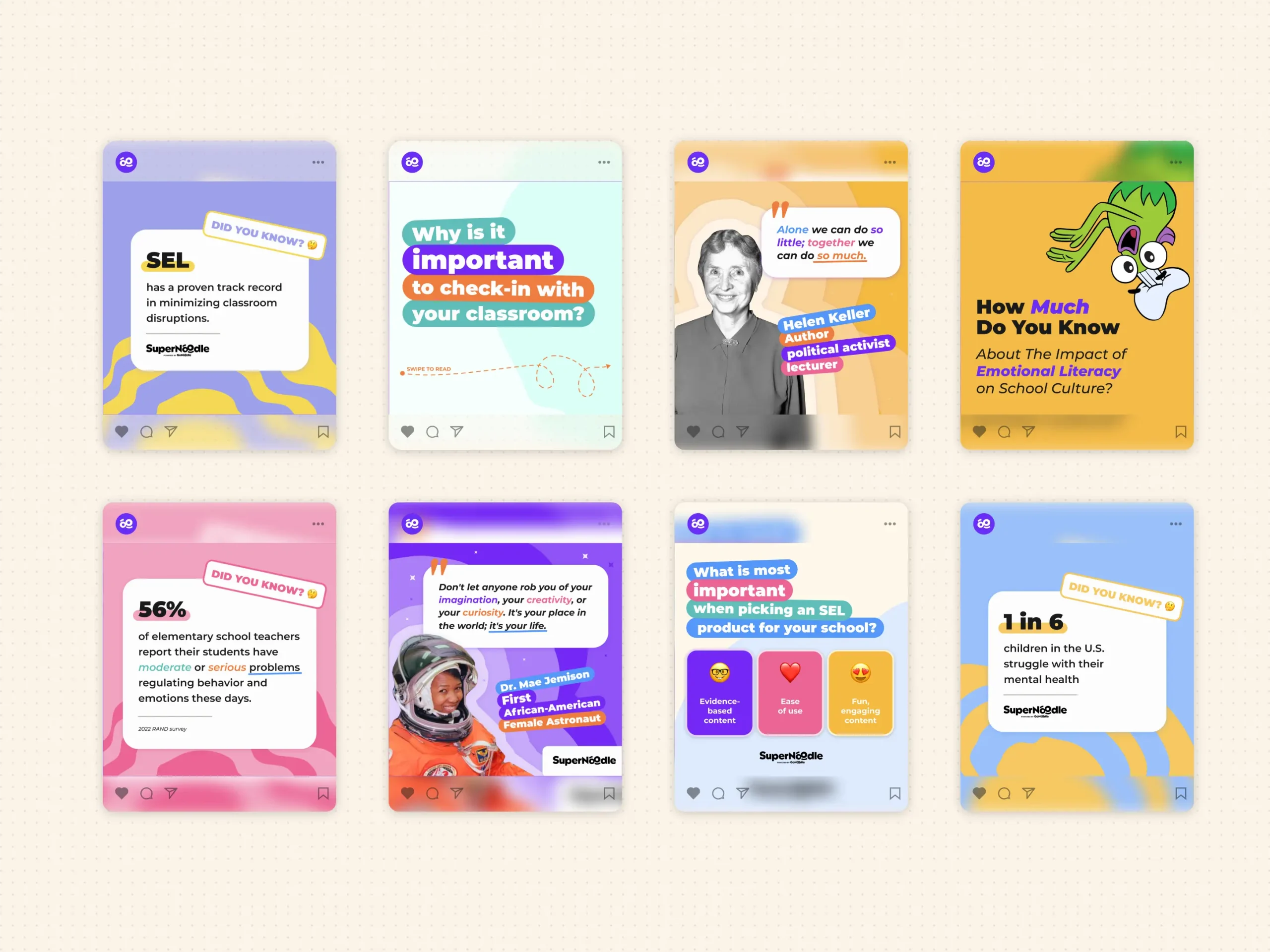
SuperNoodle: Crafting a Scalable Brand Design
Product Designer
Visual Design
Brand Design
Figma
FigJam
Adobe Illustrator
400+ learning materials → A fully structured, SEL-driven curriculum
SuperNoodle’s curriculum went from concept to reality, giving educators nationwide structured, engaging, and visually cohesive materials that help students not just learn, but grow emotionally.
📱 From scattered content to a national-level digital presence
Social media transformed from unstructured, inconsistent content into a scalable, engaging, and mission-driven system, ensuring that SuperNoodle’s message reached educators, parents, and students across the U.S.
🌍 A design system that scales beyond SuperNoodle
By creating a cohesive design foundation, I contributed to a broader movement in education, supporting not just SuperNoodle, but collaborative efforts with partners like GoNoodle and Booster, expanding the reach of SEL-focused learning.
🔍 The Challenge: No Structured Materials, No Scalable System
SuperNoodle had a strong visual identity—defined fonts, colors, and their signature characters (Champions). But when it came to actual content, there was a major gap:



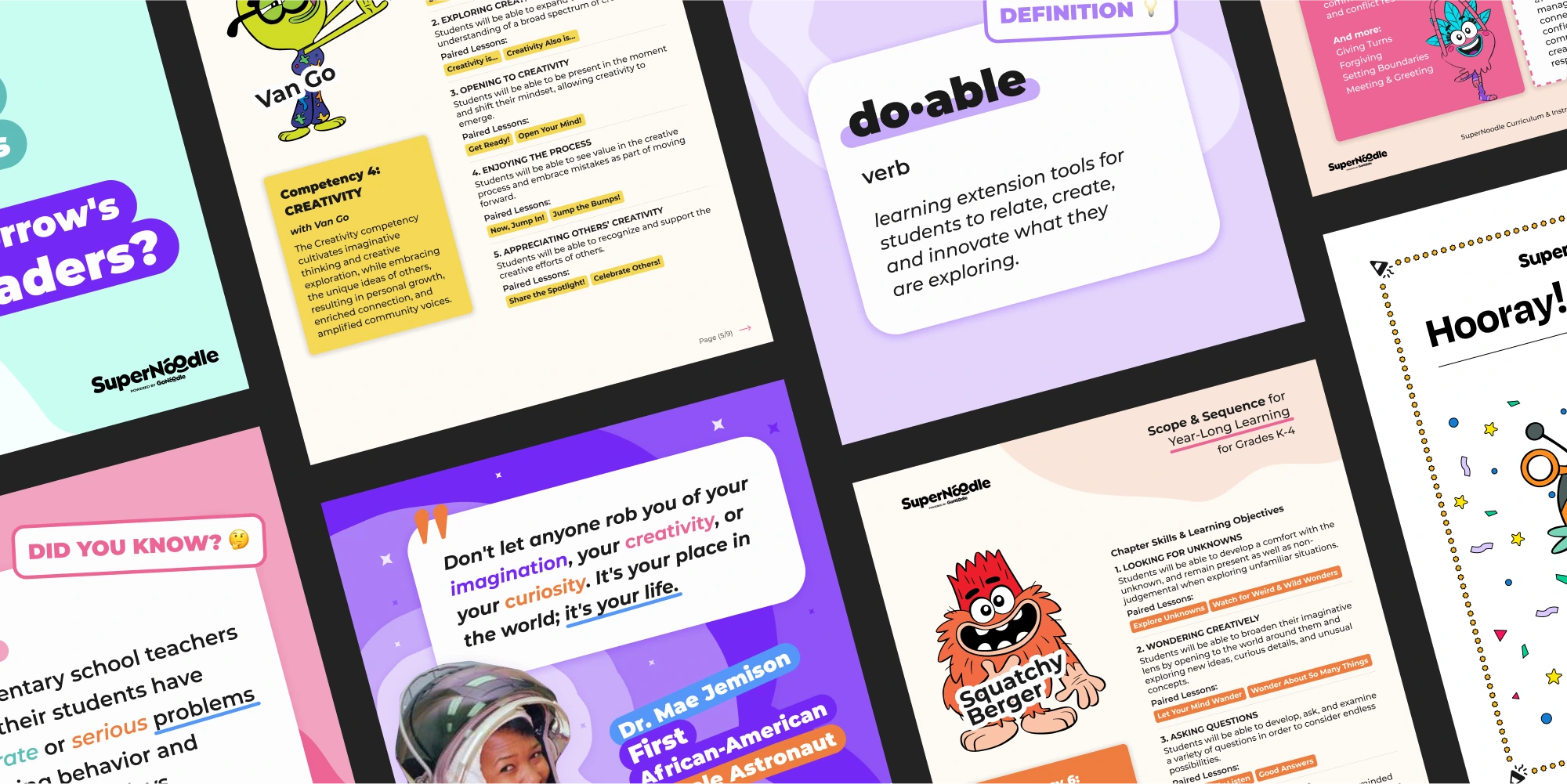
The challenge wasn’t creating a new identity—it was translating it into a real, working system that educators and students could rely on.
💡 The Solution: A Scalable, Cohesive Design System
To bridge the gap between SuperNoodle’s existing brand identity and real, functional materials, I built a structured, scalable design system that worked across three key areas:
📚 1. Curriculum Design: Turning Ideas into 300+ Structured Learning Materials
The core challenge was transforming raw curriculum content into engaging, well-structured print materials that were easy for teachers and students to use.
🎨 How I solved it:
Developed a modular layout system that kept materials visually cohesive but adaptable.
Created color-coded competency themes, making it easy to navigate the curriculum.
Designed clean, engaging templates that balanced academic structure with accessibility.
As a result of consistent work in collaboration with the Head of Education we’ve designed 300+ print materials including:
- DoAbles (learning activities for each competency, across two grade groups).
- Teacher’s guides (10 guides per curriculum).
- Pacing guides, scope & sequence docs, and glossaries to structure the learning journey.
- Certificates of completion for students.
- Family letters to engage parents.
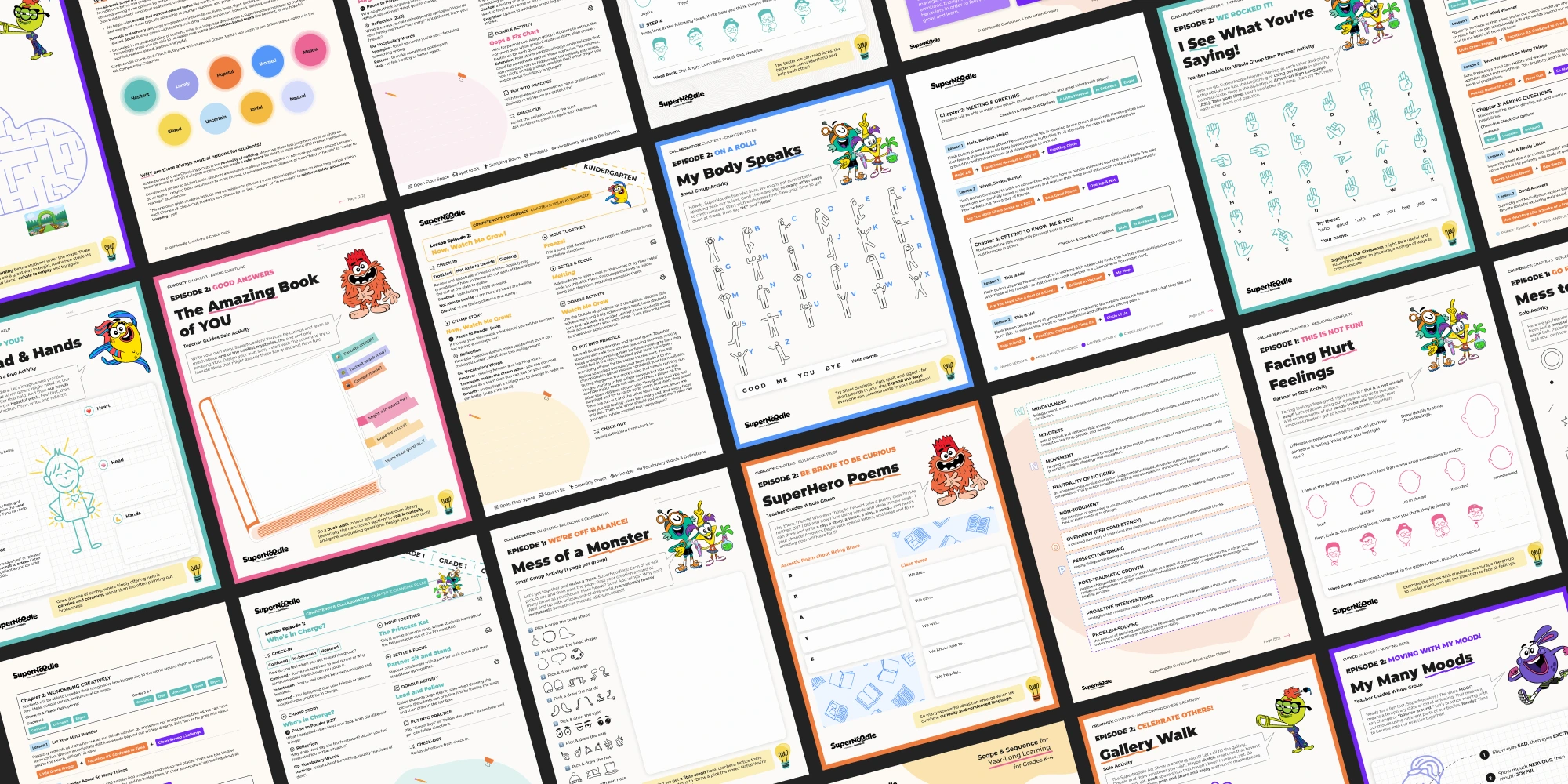
📱 2. Social Media Design: Bringing Structure & Engagement to Digital Content
SuperNoodle’s social media lacked consistency, structure, and a recognizable design style. I created a system that made content:
✔️ Easily recognizable
✔️ Visually engaging
✔️ Aligned with SuperNoodle brand identity
✅ Key implementation:
Defined clear content categories (Quotes, Did You Know, Webinars, Infographics, Emotional Facts, Carousels).
Developed a flexible visual system with reusable design templates.
Ensured a balance between fun, informative, and educational elements.
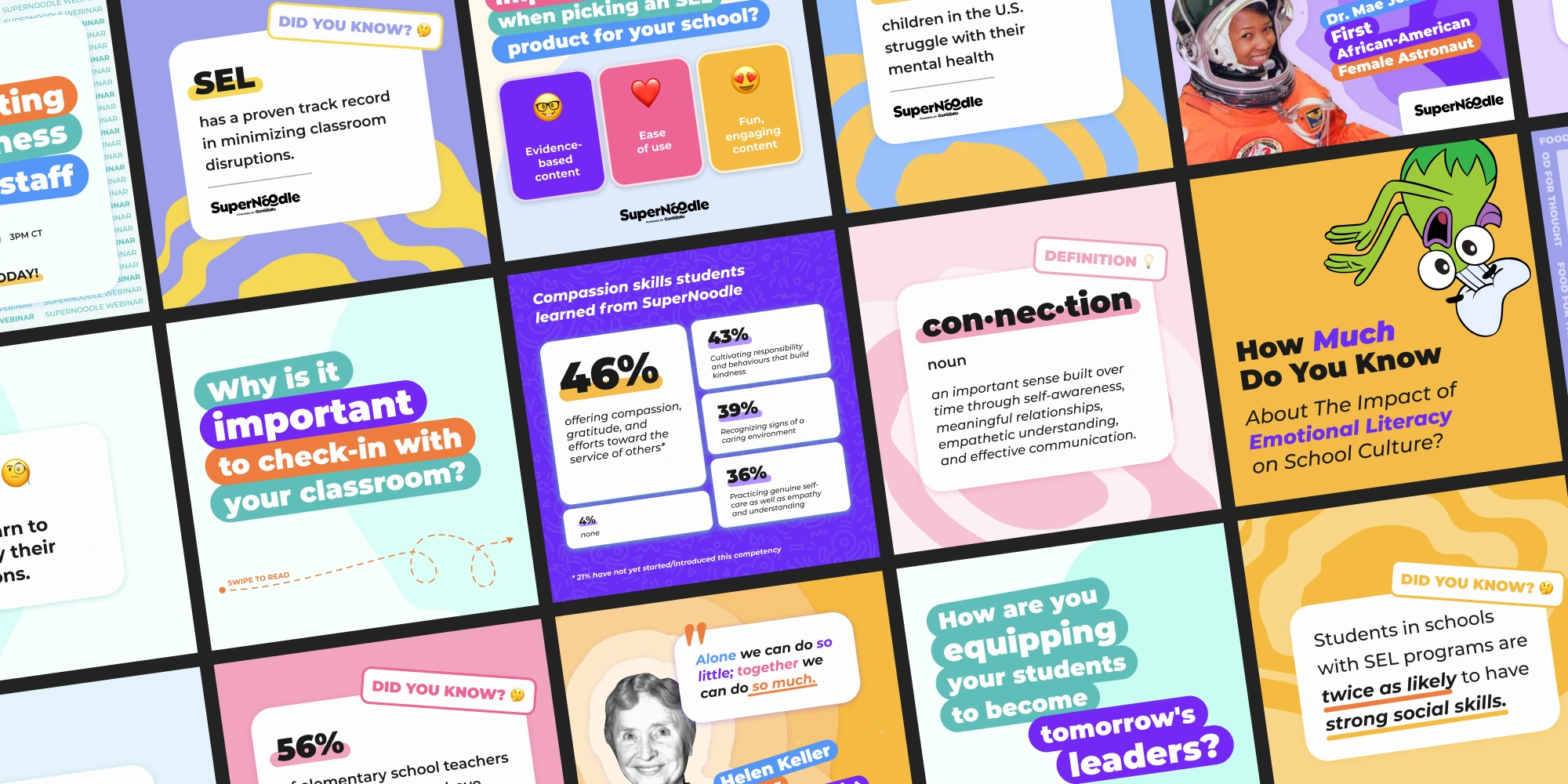
📊 3. Sales & Marketing Design: Turning Complexity into Clarity
The core challenge was transforming raw curriculum content into engaging, well-structured print materials that were easy for teachers and students to use.
🎨 How I solved it:
Developed a modular layout system that kept materials visually cohesive but adaptable.
Created color-coded competency themes, making it easy to navigate the curriculum.
Designed clean, engaging templates that balanced academic structure with accessibility.
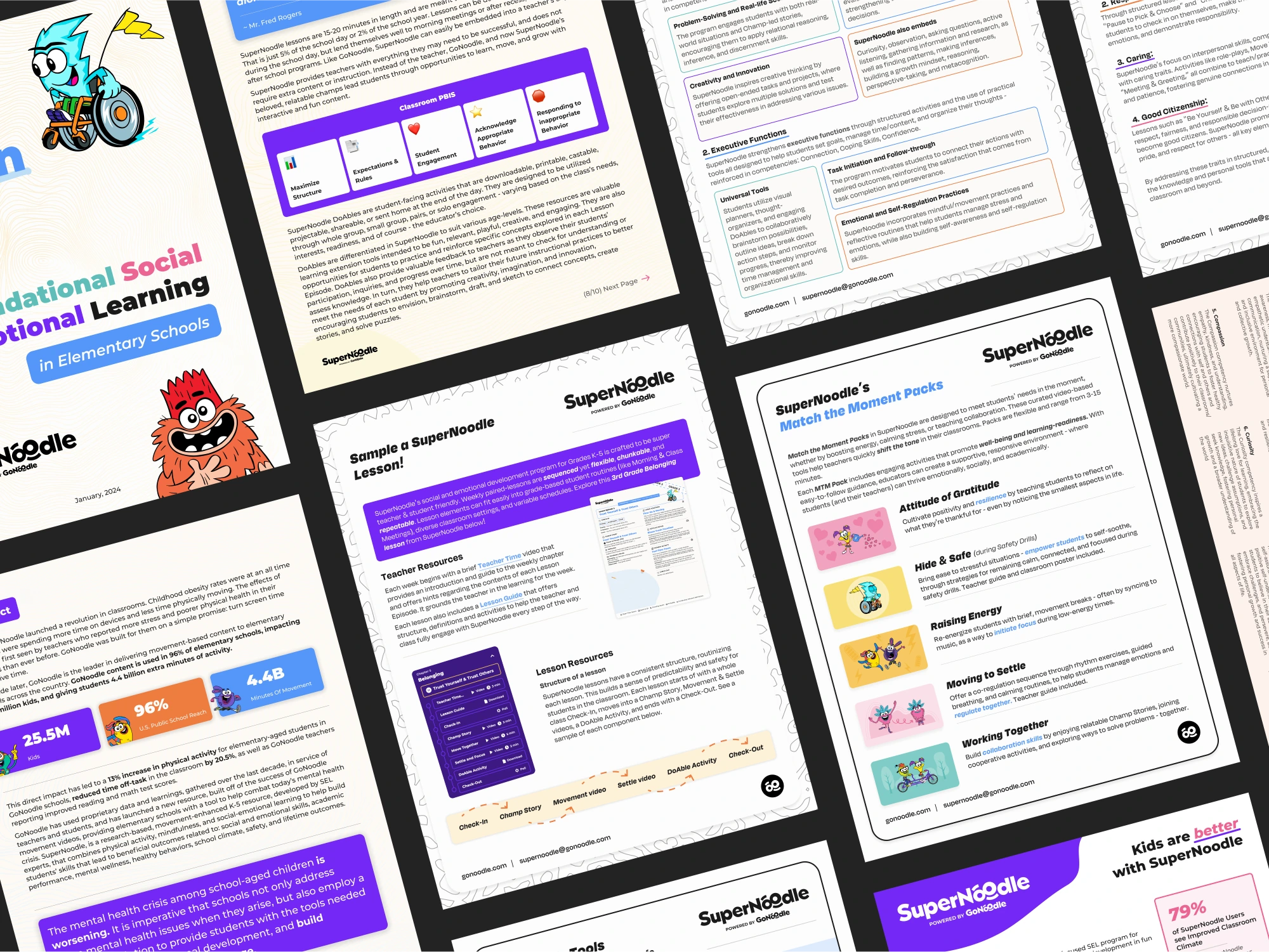
✅ Materials included:
Whitepapers that not only exlained the product in business perspective, but also positioned SuperNoodle as an EdTech leader.
Sales presentations tailored for educational stakeholders and partners.
Multi-purpose one-pages that made complex curriculum benefits easy to grasp.
Smart Little Things
Designing for SuperNoodle wasn’t just about structuring materials—it was about shaping how kids experience learning and emotions. The curriculum wasn’t only academic; it was deeply tied to social-emotional learning (SEL), helping children build confidence, resilience, and positive habits. Knowing that my designs would become a part of classrooms nationwide, guiding students through both learning and emotional growth, made this project incredibly meaningful.
And then, of course, there were the Champions—SuperNoodle’s signature characters. I loved how they added personality and engagement to every piece, making learning feel less like a task and more like an adventure. It was an absolute joy to bring them to life across different materials.
Being part of a project that helps reshape education at scale wasn’t just a job—it was a privilege.
Achivements
Designing for SuperNoodle pushed me to think beyond aesthetics and focus on scalability, clarity, and engagement. Creating a system that worked across 300+ materials taught me how to balance structure with creativity, making content both functional and visually engaging. Seeing my work help teachers, students, and parents reinforced how design shapes experiences and drives real impact. Being part of a project that reshapes education wasn’t just a job—it was a privilege. And along the way, I completely fell in love with the Champions, proving once again how storytelling and character-driven design can create deeper connections.
🔗 Final Thoughts: Beyond Just Design
This project reinforced a powerful lesson: design is more than aesthetics—it’s about shaping experiences, driving engagement, and making a real impact. SuperNoodle wasn’t just another education platform; it was part of a movement to transform learning through SEL and creative engagement.
Working on this project, I saw firsthand how thoughtful design can bridge the gap between academic content and emotional development, making education feel more personal, accessible, and impactful. And knowing that my work now plays a role in classrooms across the U.S.? That’s something I’ll always be proud of.
